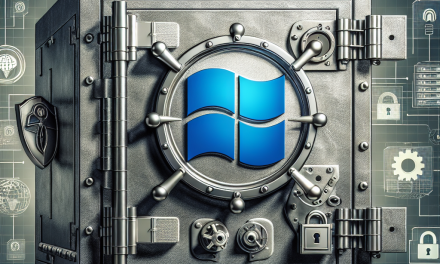In today’s digital landscape, safeguarding sensitive information is paramount for organizations of all sizes. With data breaches becoming increasingly sophisticated, leveraging encryption is a key strategy for ensuring that confidential data remains protected. Windows Server provides a range of built-in encryption technologies that can significantly contribute to an organization’s security posture. In this article, we will explore the best practices for using Windows Server encryption to protect sensitive information effectively.
Understanding Windows Server Encryption Options
Windows Server offers several encryption technologies, including:
- BitLocker Drive Encryption: A full disk encryption feature that protects data by encrypting the entire drive on which Windows is installed.
- Encrypting File System (EFS): Allows files and folders to be encrypted at the filesystem level, ensuring that data remains secure even if the user’s account is compromised.
- Server Message Block (SMB) Encryption: Ensures that data sent over the network through SMB is encrypted, preventing interception and unauthorized access by malicious actors.
- TLS/SSL: Protocols that secure data transmitted over networks by establishing encrypted connections between servers and clients.
Understanding these options is essential for implementing encryption effectively within your organization.
Best Practices for Implementing Windows Server Encryption
1. Assess Your Data Sensitivity
Before implementing encryption, it is critical to evaluate the sensitivity of the data you handle. Classification helps determine which files and systems require encryption. Focus on protecting Personally Identifiable Information (PII), financial records, intellectual property, and other sensitive data types.
2. Leverage BitLocker Drive Encryption
Enable BitLocker on all servers, particularly those containing sensitive information or serving as file shares. BitLocker encrypts entire drives, providing a robust layer of security. Ensure you properly configure the recovery key and store it securely, as it will be necessary for accessing the data if drive letters change or if the system experiences a hardware failure.
3. Use Encrypting File System (EFS) for Sensitive Files
For individual files or folders containing sensitive information, utilize EFS to provide encryption capabilities at the file level. EFS allows users to encrypt files based on user accounts, providing granular control over who can access the information. Educate users about how to encrypt their files to ensure compliance and security.
4. Implement SMB Encryption for Network Shares
For organizations that rely on cross-network communication, enable SMB encryption on shared folders to ensure that sensitive data transferred across the network is protected. This feature is especially crucial for environments where sensitive information is regularly accessed or shared among multiple users.
5. Enable Transport Layer Security (TLS)
Always use TLS for encrypting data in transit. This is especially important for web applications and services. Make sure to configure your web servers to utilize the latest SSL/TLS versions to protect data as it moves between clients and servers.
6. Establish Key Management Protocols
Implement a strong key management protocol to control access to encryption keys. Partners, employees, and third-party vendors must have the correct levels of access to encryption keys to prevent unauthorized access. Use Active Directory for managing permissions and ensure keys are stored securely and backed up regularly.
7. Regularly Update and Patch Systems
Keep all Windows Server operating systems and applications updated with the latest security patches. Regular updates mitigate vulnerabilities that attackers could exploit, thereby enhancing the overall security and effectiveness of your encryption measures.
8. Educate Staff on Security Awareness
Regularly train and educate your staff about encryption and data security best practices. Awareness of potential security threats – such as phishing attacks and social engineering – is critical in maintaining the integrity of your encryption solutions. Encourage users to recognize secure connections (e.g., looking for HTTPS) and understand the importance of encryption in their daily activities.
9. Regularly Review and Audit Encryption Implementations
Establish a routine for reviewing and auditing encryption implementations. Verify that the encryption methods used are effective and align with your organization’s data protection policies. Regular audits help to identify potential weaknesses and ensure compliance with relevant regulations and industry standards.
Conclusion
As organizations increasingly rely on digital data, implementing robust encryption practices with Windows Server is essential for safeguarding sensitive information. By following these best practices, you can create a comprehensive encryption strategy that leverages the built-in features of Windows Server, ensuring that your organization remains secure in an increasingly complex threat landscape. Remember, encryption is just one part of a broader security strategy, and a holistic approach incorporating multiple layers of defense is critical for effectively protecting your organization’s valuable data.
By prioritizing the implementation of these best practices, you can turn Windows Server into a powerful ally in the battle against data breaches and ensure that your sensitive information remains secure.





